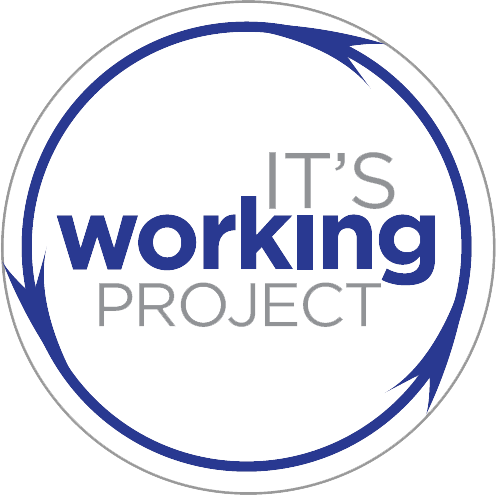What a year for back-to-work after baby! As the United States woke up to find itself at the bottom of the graph when it comes to paid leave among industrialized nations, the tech industry began offering paid leave as the perk du jour, spurring a benefits race across the private sector as a whole. As Emily Peck points out in her Huffington Post piece, This Was The Year We Finally Started To Care About Working Parents.
The issues of paid leave, and return, have also made their way onto the presidential campaign trail. But perhaps the most impressive shift in the burgeoning national conversation about parents in the workplace came from Jodi Kantor and David Streitfeld whose NYTimes piece, Inside Amazon: Wrestling Big Ideas in a Bruising Workplace a Toxic Work World showed us it’s less about the benefits and more about the culture. In fact, it’s all about the culture. Garnering over 5k comments, the game-changing expose became the most commented-on NYT piece of the year, and shattered the previous record from 2013 for the most commented-on news story at The Times in general.
For taking parental leave and return from the sidelines to headlines, we applaud Kantor and Streitfeld’s “Inside Amazon” as the pivotal article in back-to-work after baby for 2015. In addition to this groundbreaking piece, here are our top picks for the powerful moments in which the media captured the public’s attention, kept the dialog on the front-lines and paved the way for new parents to get back to work with ease, as a matter of course, and with a sense of pride.
1. Inside Amazon: Wrestling Big Ideas in a Bruising Workplace
Jodi Kantor and David Streitfeld
The New York Times (Business Day)
Aug. 15, 2015
Why it matters:
By shining a light on a workplace culture that places a premium on the employee and fails to take into consideration the person (and often times parent), Kantor and Streitfeld created a robust dialogue around an issue that affects every working family in this country, 5000+ comments worth.
How it moved the conversation forward:
A workplace culture that values people, not just employees, makes it easier to give your best at work and at home. In an era in which there is no legislative mandate to do this, it falls on the private sector to lead the way in successfully supporting American working families.
2. Inside the Secret Society of Executive Moms
Fortune
July 30, 2015
Why it matters: Mothers who feel unsupported in the workplace often end up quitting. Even in the C-Suite, where women climbed the ladder and broke the glass ceiling, there is a lack of support around maternity leave and return. A network of executive moms has taken to helping each other navigate back-to-work after baby, filling the void left by HR policies and benefits.
How it moved the conversation forward: If executive moms are parent-hacking from the C-Suite for their back-to-work after baby needs, what hope does that leave for the rest of the women in the workforce? Replacing these executives is costly to company bottom line, morale, and culture.
3. Netflix and Parental Leave: Today a PR Move. Hopefully Tomorrow, the Norm?
The Washington Post
August 5, 2015
Why it matters: Good benefits are good for attracting, engaging, and retaining top talent, but they are great for PR. Perhaps motivated by headline-grabbing announcements about family friendly benefits, more companies this year modified their parental leave and return benefits.
How it moved the conversation forward: Whether they’re doing it for the PR or the genuine consideration of their parent employees, when companies try to keep up with the Netflixes, it’s a win for parents who could use some much needed help navigating leave and return.
4. John Oliver Defends Paid Family Leave on Mother’s Day
Salon
May 11, 2015
Why it matters: On a day when people across the U.S. were focused on how to show their mothers they appreciate her, comedian and political commentator John Oliver demonstrated our national hypocrisy by pointing out the useless things we buy to honor our mothers (plant pots, purses, professional baseball tickets) and the one thing they truly deserve (paid leave).
How it moved the conversation forward: In 12 minutes and 21 seconds, John Oliver entertained Americans with a well-reasoned and well-supported argument for why they should care about paid leave.
5. Big Leaps for Parental Leave, if Workers Actually Take It
Claire Cain Miller and David Streitfeld
The New York Times (The Upshot)
September 1, 2015
Why it matters: While we are in the midst of a parental benefits revolution, if employees don’t feel that their workplace culture legitimately wants–and expects–them to partake of such benefits, they become null and void. This negatively impacts the parents, of course, but also the companies who will not see a sustained improvement in attraction, engagement, and retention of top talent.
How it moved the conversation forward: Here, too, by shifting the focus of the conversation from workplace perks to workplace culture, Cain Miller and Streitfeld encourage people to think about what makes parental leave not only plausible, but successful.
6. The Ripple Effects Of Mark Zuckerberg’s Two-Month Paternity Leave
Think Progress
November 23, 2015
Why it matters: Common sense tells us that fathers taking time to spend with their partner and new child is good for the partner, good for the child, not to mention good for the father and his work. Studies also show us that this is true. Yet up until recently paternity leave has suffered a perception problem.
How it moved the conversation forward: Zuckerberg taking two months (up front) of his company’s allotted 4 months parental leave over the baby’s first year sends a message to Facebook employees that fathers can and should partake of this benefit. It also sends a message to the public that real, successful men take real time away from work to support their partner and bond with their new child.

